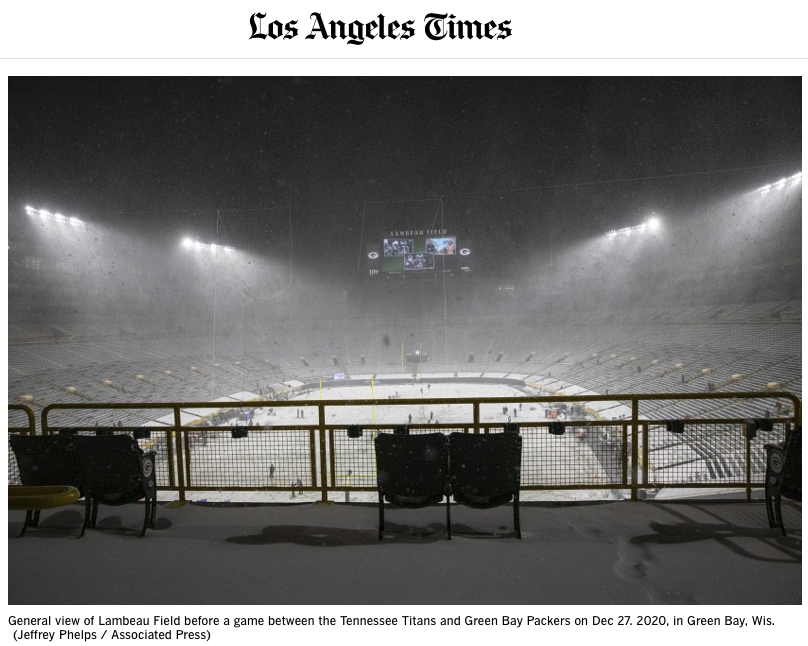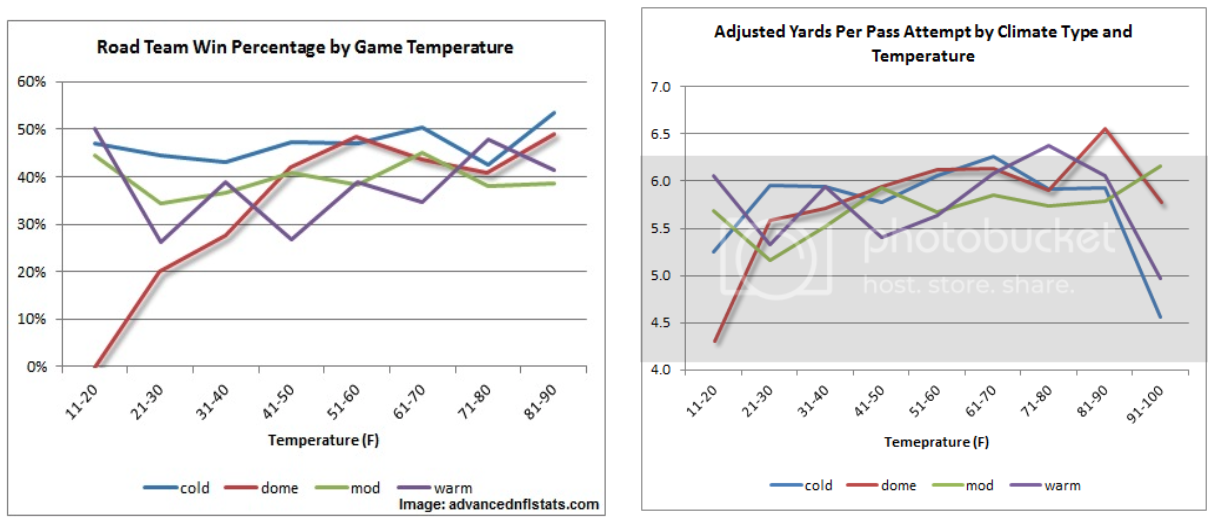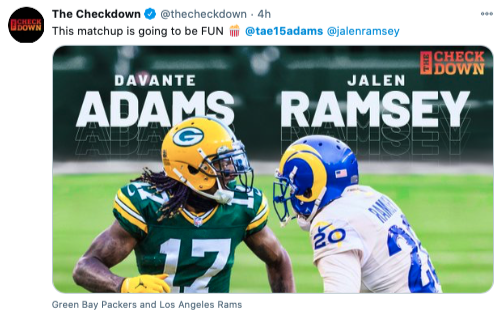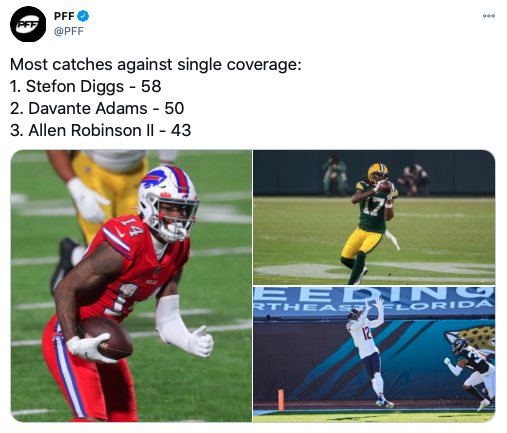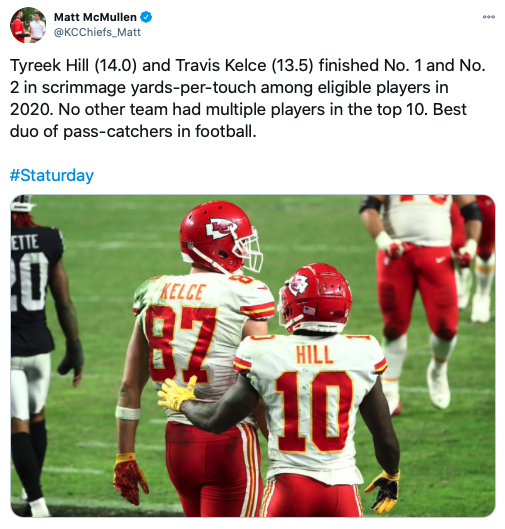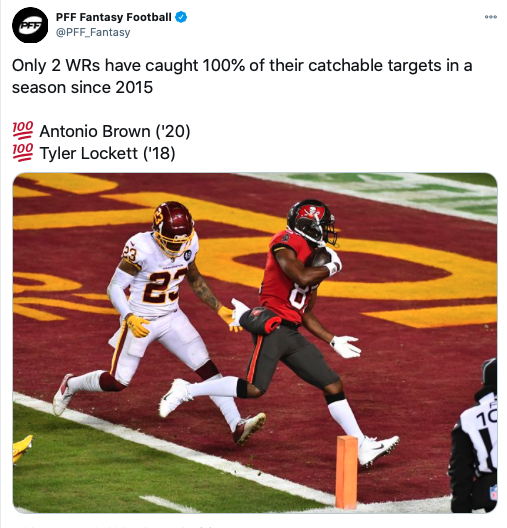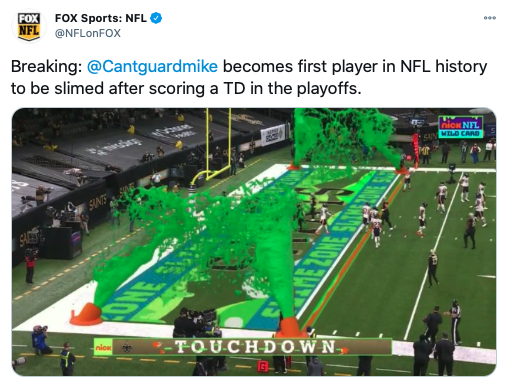Hey there. If you weren’t already aware, you’re reading Part-3 of a 4-Part breakdown on this week’s Divisional Round DFS slate. In this article, we’ll be breaking down all relevant WRs. Get the breakdowns for QBs, RBs, and TEs.
We have an exciting collection of teams featuring the best-of-the-best facing off in the Divisional Round of the playoffs. Follow along as we examine each positional grouping for each team to identify the DFS value/upside on both DraftKings and FanDuel. Below is a breakdown of the WR position.
Before we dig too deep into the specifics, it’s important that we factor the following:
On a typical full-game slate, you would normally want to feel comfortable with most rostered players. That would even extend to punt-plays who we would normally expect to offer tremendous upside. On this shorter slate – four games, eight teams, it’s sometimes necessary to roster individuals we would normally avoid in order to pay up for studs elsewhere. If we decide on the Saturday- or Sunday-only slates, those options are cut in half.
It’s also very important to consider late-swap strategies on these smaller slates. If you have any tournament lineups that, after a bad game or two, seem unlikely to cash, you have nothing to lose, and everything to gain by adding exposure to some riskier, lower-owned players.
TL:DR: Beware of the Rams’ passing offense! My platform premium combined-slate options are Josh Allen as having the most significant upside on DK and Patrick Mahomes on FD. Baker Mayfield on DK and, perhaps, even John Wolford offer us intriguing low-salary, large field GPP value.
Expose (Combined slate): Stefon Diggs, Michael Thomas, Antonio Brown, Chris Godwin, Cole Beasley, Rashard Higgins
Expose (Saturday-only): Davante Adams, Diggs, Woods (FD), Beasley, Gabriel Davis, Willie Snead IV (FD)
Expose (Sunday-only): Tyreek Hill, Thomas, Brown, Godwin, Evans, Higgins, Deonte Harris
On the Fence (Combined): Hill, Mike Evans, Woods, Jarvis Landry, Emmanuel Sanders
On the Fence (Saturday): Adams, Marquise Brown, Woods (DK), Allen Lazard
On the Fence (Sunday): Landry, Sanders, Mecole Hardman, Tre’Quan Smith
Fade (Combined): Adams (FD), Cooper Kupp, Marquise Brown, John Brown
Fade (Saturday): Kupp, John Brown, Marquez Valdes-Scantling
Fade (Sunday): Demarcus Robinson
Matchups (Vegas): The games offering the highest stacking upside are Baltimore at Buffalo on the Saturday slate and Cleveland at Kansas City on Sunday. The Tampa Bay at New Orleans matchup on Sunday is also ripe for the stacking. The Ravens will travel to Orchard Park as 2.5-point dogs to face a Bills squad currently riding a seven-game winning streak. Vegas is currently passing along an implicated total of 50 points, 26.25 to Buffalo. Each of the four home teams are implied to score at least 26 points.
I am fully anticipating that we’ll see Baltimore-Buffalo score in excess of 50 points. A ton of money is being wagered on this game covering that total and for the Ravens to cover the 2.5 points. Not sure that I agree with the latter. On the Saturday slate, weather could certainly play a role. I’ll cover that in a bit. But, placing weight on an extensive history of cold weather acclimation, the passing offenses in this game are my optimal targets. On the Sunday slate, the Browns-Chiefs clash offers up plenty of upside within a game implied for 57.0 points, highest of the Divisional Round, and with KC implied for a weekend-high of 33.5 points. But we certainly shouldn’t forget about the Buccaneers-Saints implied for 52.0 points.
Matchups (Weather): Only two-of-eight remaining playoff teams (Rams and Saints) play in a domed or retractable roof stadium. That’s a significant, often overlooked factor for these January playoff games. Since it’s not the purpose of this edition, I’ll only state that, as the temperatures drop, ground attacks experience a significant increase in efficiency. The same cannot be said for the passing games. The following chart provides the stadium type, average January temperature at home, and forecasted weekend temperatures for each playoff team:
From my research, the external factor impacting passing production the most is wind speed of 12-15 MPH-or-more. Another overlooked factor relevant to this weekend’s outdoor games are the wind gusts within the outdated, concave stadiums. It’s impossible to spot in this photo of Lambeau Field below, but the view does provide an idea on the path of wind falling on the field in a downward motion that slants at field-level.
Whereas newly-designed stadiums utilize various construction factors to distribute the strong winds, Lambeau Field (1957), Bills Stadium (1973), and Arrowhead Stadium (1972) were each constructed at least 47 years ago without any significant renovations other than seating expansions. I am certainly not a meteorologist, but wind research is not difficult to uncover. These three stadiums were purposefully constructed to give their home teams a marked advantage. The capacity expansions that drastically increased the overall stadium height only resulted in a reduction in the reliability of on-field wind conditions. High velocity wind gusts and vortexes can drop on the field of play in an instant, particularly when forecasts call for winds anywhere close to 10 MPH.
After wind, dramatic shifts in climate are not that far behind in its effect on gameplay. Temperature extremes at both ends of the spectrum are such a tremendous factor that even Aaron Rodgers, The King in the North, has been hit with a level of drop-off in efficiency. It just has nothing close to the effect on Rodgers as it does on visiting passing offenses establishing their homes in warm-weather states, or under domes. The following charts fromAdvancedNFLStats.com provide us with some compelling evidence:
The resulting data speaks for itself. The teams experiencing the most substantial impact from playing in cold weather are those traveling in from moderate- and warm-weather states, and from playing inside climate-controlled domes. When teams play in temperatures below 25°, the sample is so small that the data is extremely unreliable. And the results have been uniform across all of the research I’ve uncovered. As temperatures drop below 40°, QB efficiency drops at an exponential rate on passing offenses. As conditions worsen, overall passing attempts decline in combination with passing YPA, and completion percentage.
As for the Why of it all, former Dallas and Miami HC Jimmy Johnson – born in Texas, attended HS in Louisiana, and matriculated at the University of Arkansas – was quoted as saying: “I remember being on the sideline in winter in the Meadowlands and it was so cold I didn't know what down it was, much less what play to use.” If you’d prefer scientific evidence, thisstudy found that both moderate and extreme reductions in ambient temperature during winter sports settings led to decrements in memory, vigilance, reaction time, and decision making. And, very important for our purposes, a reduction in cold stress from acclimation or acclimatization should in theory limit shivering and thermal discomfort and thus potentially limit the level of distraction and thus may positively influence cognitive function.
How can we use all of this information to our advantage?
For the Rams-Packers, to say Green Bay has home field advantage simply does not represent the extent of reality. Temperatures on Lambeau Field will start off at 34°, but will drop by around 5° by the end of the game. John Wolford has yet to practice this week. He might actually be the more capable QB for the Rams in this spot, if healthy. In Jared Goff’s last two games played in temperatures under 35°, he’s thrown for zero TDs compared to five INTs. The only Rams’ player that will have my Cash/SE trust will be Cam Akers.
For the Ravens-Bills, both teams have plenty of experience playing in cold weather. However, wind gusts inside Bills Stadium could reach 20 MPH on Saturday night. We also need to keep a close eye on thisstormfront shaping up to cover the East Coast on Saturday. It is considered well short of severe, but any type of decrease in weather conditions impacting the northeast will impact all three outdoor games. Before this piece could even be published, wind speeds have already increased for each outdoor game.
Finally, for the Browns-Chiefs, both franchises also have an extensive history of cold weather experience. But the wind gusts could dampen our expectations for offensive fireworks if the current estimation of 14 MPH velocities increase closer to game time. Of the three outdoor games, I originally considered this to be the one to remain the safest for exposure across all skill positions. The updated forecast has temperature falling into the 30’s and wind speeds increasing from mild to moderate. That really levels the playing field for the three outdoor games.
Matchup (Home vs. Away): In years past, home/road splits played a significant role during the playoffs. The climate at home locales has obviously already been covered. However, the absence/limitation of fan attendance mostly eliminated that portion of the home field advantage during the regular season. Here is a breakdown of the fan attendance during the Divisional Round this weekend:
After the Steelers and Titans lost during the Wildcard Round with the most significant (around 6,000) in-stadium attendance, I am only expecting Kansas City to receive an advantage in that regard. The Chiefs will certainly accept every bit of it after taking both of their losses at home this season. The Packers and Bills are both 7-1 when hosting their opponents, with the Chiefs and Saints coming in at 6-2. Tampa Bay and Baltimore are both 6-2 on the road, Cleveland is 5-3, and the Rams are 4-4.
Note: All numbers below players in parentheses refer to their salary rank on each site.
Los Angeles Rams Receivers at Green Bay Packers (Saturday: 4:35 PM ET – 3:35 Local)
Robert Woods (DK: WR7, FD: WR8): A whopping 78 percent of the money has been placed on the Packers covering as 6.5-point home favorites. Should we respond to that information by stacking the Rams within a negative game script? In no uncertain terms, hell no! Their WR unit should be at full strength, but the weather is a major concern for Los Angeles traveling from both warm weather and an indoor stadium. The last game the Rams played in temperatures under 35° was Week 14 of 2018 at Chicago with 29° weather. Jared Goff was picked off four times, finishing with 4.1 YPA, and a 19.1 QB rating. Had Goff simply thrown the football into the ground on his 44 passing attempts, he would’ve earned a 39.6 QB rating.
For his efforts over 50 routes during that 15-6 defeat, Bobby Trees brought in seven-of-13 targets for 61 empty yards. Prior to that, LAR met up with the Broncos in Denver back in Week 6 of ‘18 playing in 24° weather. Woods was once again peppered with targets (10) that actually pushed him over the century mark in yardage (109). But Goff didn’t fare that much better in the 23-20 victory. Zero TDs to one INT, 7.2 YPA, and a 58.8 QB rating. We would certainly be happy with 20.9/17.1 FPs at $5.9K/$6.6K. And it’s certainly a possibility.
That’s it. We would need to dig into data prior to 2010 – which I am unable to locate anyway – for games with the Rams playing in these conditions. If Cooper Kupp were to miss this game after not practicing the last two days, I guess the upside for Woods would slightly increase. But I’ve not even mentioned the possibility of Woods being covered by Jaire Alexander. After traveling early in the season, Alexander has settled into a home at left CB. That’ll place him across from Woods on around 40 percent of his routes. Those routes will essentially be wiped from the record. Alexander ranks within the top-five of my Big 3 of coverage metrics among the 91 qualified outside CBs this season.
I am still of the belief that Woods is the only receiving option from Los Angeles worthy of any consideration whatsoever. The expectation is that Woods will be the fourth-most owned WR on the Saturday slate. I am more concerned with Goff’s downside than Woods being ghosted, but I do not expect Woods to have a “big” game under any circumstances. The Packers, as a unit, are insensitive to opposing WRs fantasy needs. Green Bay has only approved 32.6 FPG to opposing WR units this season (fifth-best). Another factor pushing me away from Rams’ receivers is that in the last 11 games the Packers have played at Lambeau Field in freezing conditions, opposing WR1’s have averaged 15.6/12.9 FPG.
Cooper Kupp (DK: WR10, FD: WR11): It goes without saying that major props are in order for Cooper Kupp doing everything he can to be ready for this game. The knee injury he suffered last week had the appearances of something significant. Unfortunately, we will only learn whether Kupp will simply be used as a decoy, or if he’ll be fully functional when the game is already underway. That is, if he even suits up. If he does play, his name value will push far too many DFS degenerates into exposure. I’ve already detailed the list of factors steering me away from Rams’ receivers other than Robert Woods. I have a process, I stick to it. I never deviate.
Josh Reynolds (DK: WR27, FD: WR20): While Josh Reynolds was the only WR other than Robert Woods and Cooper Kupp to run a route last week, he failed to draw a single target. Much of the same for Reynolds. He’s been one of the least efficient WRs across the league with his share of snaps. He ranks 107-of-123 qualified wideouts in FPs/route (0.236). It may be tempting to follow the 10-13 percent of the field toward exposure at only $3.2K/$5.2K. But there is a clear reason a WR whose run a route on 77 percent of dropbacks this season is priced so low.
Green Bay Packers Receivers vs. Los Angeles Rams (Saturday: 4:35 PM ET – 3:35 Local)
Davante Adams (DK: WR1, FD: WR1): The biggest question for Sunday is whether to use Alvin Kamara. For Saturday, it’s Davante Adams. In the case of Adams, it’s a near guarantee that he’ll draw a travel from Jalen Ramsey. Last week, Ramsey shadowed DK Metcalf for much of the game. Prior to this scramble drill,12-yard TD at 2:34 of Q4 with the ‘Hawks down three scores, Ramsey certified a 3/33/0 line on seven targets to Metcalf.
However, I consider Adams as one of the least sensitive WRs to most outside influences. First off, he is littered with dedicated volume from Aaron Rodgers. Second, in his three examples of drawing a shadow this season, he averaged 21.1 FPG on only two-thirds of total routes. That equates to 31.7 FPG over a full game. Do I feel that Adams will throw down 31.7 FPG on Ramsey? I said most influences. That answer is no. It is possible that he covers his 25.8/22.5 FP-floor at $8.6K/$9.0K? Sure, actually entirely conceivable. He may even do enough to end the Divisional Round as the top-scoring WR with similar weather impacting his WR1-competitors on the Bills (Stefon Diggs) and Chiefs (Tyreek Hill).
We also have the knowledge that in those last 11 games the Packers have played at Lambeau Field in freezing conditions with Rodgers under center, Adams has averaged an 8.5/113/1.5 receiving line, and 29.0 FPG. The final factor that could push most toward Adams exposure on the Saturday slate in Cash/SE is the awareness that he is likely to be owned in three-fourths of lineups. But, even on a two-game slate, trying to cram Adams into a lineup with Diggs is likely to put a dent in at least two other slots. It’s not even up for debate on the combined slate, as much as it pains me, I’ll be fading Adams in order to build a complete Cash/SE lineup.
Marquez Valdes-Scantling (DK: WR21, FD: WR14): Avoiding Ramsey does not indicate Marquez Valdes-Scantling is in the clear. Darious Williams has been excellent this season opposite his All-Pro running mate. MVS exposure should be reserved for large field GPPs and, even then, only at a minimum percentage.
Allen Lazard (DK: WR19, FD: WR18): Attacking the Rams through the air is actually possible from the slot. Troy Hill has not been up to the elite level of his outside CB teammates, not many are. On a per target basis, slot WRs have scored FPs at a 19 percent higher rate than on the outside. And Lazard ran a route on 79 percent of dropbacks in Week 17 compared to 43 percent for MVS. But forcing yourself to trust a WR averaging 6.5 FPG over his last seven in Cash/SE will leave your stomach in knots.
Equanimeous St. Brown (DK: WR31, FD: WR31): Equanimeous St. Brown actually ran a route on 36 percent of Week 17 dropbacks to only 43 percent for Valdes-Scantling. But ESB has yet to top double-digit FPs this season. Expecting him to do so facing these Rams is not a good idea.
Baltimore Ravens Receivers at Buffalo Bills (Saturday: 8:15 PM ET)
Marquise Brown (DK: WR11, FD: WR9): I get it, we have a seven-game sample size of performances from Brown where he’s provided us 16.9 FPG. That includes going for over 100 yards in the Wildcard Round for the first time since Week 1. Unfortunately, the Titans’ secondary will be off the menu. In their place: Tre'Davious White and a Buffalo secondary that’s limited opposing WR units to only 32.1 FPG this season (fourth-best). We haven’t seen White shadow opposing No. 1’s much this season. Unless Leslie Frazier plans to shift Taron Johnson over from the slot, I will be shocked if he allows Levi Wallace’s 4.63-speed to trail, and trail he would, behind Brown’s blazing 4.32-speed.
On the downside of things from Brown, he was ghosted (2.8 FPs) by these Bills in Week 14 of last season, and actually put up nearly identical numbers when facing the same Tennessee in the Divisional Round last season. At the end of the day, I simply can’t get past the smash spot presented to Mark Andrews here. If you’re going to chase after a Baltimore WR, the next player could offer up as a better value than Hollywood. Please take note: stacking more than one Ravens’ receiver with Lamar Jackson may not end well.
Willie Snead IV (DK: WR24, FD: WR24): Willie Snead IV missed Week 17 and appeared highly questionable last week with an ankle injury. The fact that he has been left off the injury report entirely this week is promising. The only reason we are considering Snead is to free up that precious cap space. And he is only a consideration on the Saturday slate.
We should never read too deep into the matchup histories, but the fact that he’s scored a pair of TDs in three career games against Buffalo is noteworthy. He was also able to put together a 6/56/0 line in the Divisional Round last season. As the WR24 on both platforms, a repeat of that performance or his career average line against the Bills (8.4 FPG) would be considered a victory.
Miles Boykin (DK: WR29, FD: WR25): I can stomach going after the WR2 in a game implied for 50 points. That trust does not extend to Baltimore’s WR3. He’ll likely draw Levi Wallace but, in spite of the differences in speed, I’m willing to bet against Miles Boykin doing anything over the top against a defense allowing the seventh-lowest rate of 20-or-more completions. Boykin’s consistently remained on the field over 50 percent of dropbacks the last six weeks, but he’s only seen a double-digit target share in one of the last five on a team that doesn’t pass.
Dez Bryant (DK: WR31, FD: WR27): As we dive deeper into the WR depth, I only mention Dez Bryant in order to lure you away. He only ran a route on 15 percent of dropbacks without a target last week. Expect much of the same.
Devin Duvernay (DK: WR31, FD: WR36): The same goes for Devin Duvernay, whose future upside I love. He was only on the field for three percent of Wildcard Round dropbacks. Steer clear.
Buffalo Bills Receivers vs. Baltimore Ravens (Saturday: 8:15 PM ET)
Stefon Diggs (DK: WR3, FD: WR3): The Ravens are not in the shadow business. Due to various nagging injuries, Jimmy Smith has unfortunately been forced to focus his efforts toward obvious passing situations since Week 9. Since Marcus Peters was been unable to practice on either Tuesday or Wednesday with a back injury – finally putting in a limited practice on Thursday, the passing attack of Buffalo is heading into a prime opportunity. Even if Peters manages to play, he’ll have no chance across from Diggs on the 40 percent of snaps that’ll bring them together.
To be completely honest, nobody on Baltimore would have a chance in coverage on Diggsy on any meaningful amount of snaps. A serious argument can be made for Diggs, with Josh Allen as his QB, as being the top WR in the NFL when facing man coverage. When Corey Davis went down due to injury last week, we only saw a minimal amount of snaps from the Ravens attempting to play man against A.J. Brown – another top-five WR versus man coverage. But he still managed 14.2 of his 20.3 FPs (70 percent) on only 47 percent of his total routes defended by Cover 0 and 1.
Those numbers are money in the bank in favor of Diggs’ upside. I should mention that the Ravens play man coverage at the NFLs third-highest rate (47 percent). At no point since Week 3 has Diggs’ target share dropped below 23 percent. That share has even gone north of 30 percent in eight of the last 13 weeks. The only downside for the Bills’ passing offense is the pace of play. Baltimore has been the fifth-slowest team this season. Much of that has been registered when they’ve had a lead or were within one-score of their opponent. The opening possessions of this game will determine the fantasy fates of so many players on the Saturday slate. We’ll still need to deal with inclement weather here, but I’ll still have 100 percent exposure to Diggs on the combined and Saturday slates.
Cole Beasley (DK: WR12, FD: WR12): He didn’t leave a trail of combustion behind him, but Cole Beasley still managed to return from his knee ailment to run routes on 79 percent of dropbacks last week. That is enough for us to take stock in his excellent upside. Even with Stefon Diggs pacing NFL WRs in targets, receptions, and yards, 10% Milk has managed to secure at least a 20 percent target share in five of his last seven games played.
He’s not coming anywhere close to the 121.7 air yards/game of Diggs, but he’s still averaged 1.92 yards/route run (YPRR) that is in line with the best slot WRs in the playoffs. Best of all, Beasley is priced outside of the top-10 WRs, something we cannot state about the other top slots. We can expect to see Beasley rostered in around one-fourth of lineups. I’m not going after him on the combined slate in Cash/SE, but I will have him in those lineups on both platforms for the Saturday slate.
John Brown (DK: WR14, FD: WR14): We saw a glimpse of what Smoke is able to do in Week 17 against the Dolphins. Unfortunately, he was unable to carry that success over to the Wildcard Round. Running as many routes as Stefon Diggs, John Brown failed to bring in any of his four targets.
Brown is also outside of the top-50 qualified WRs when facing man coverage over the last two seasons. It’s always possible that he could take one to the house. With 4.34-speed, that tends to be the case. If Marcus Peters is ruled out, Brown’s upside will rise. If not, I simply cannot get behind him with the next guy putting splash plays on tape on a weekly basis.
Gabriel Davis (DK: WR18, FD: WR16): Love me some Gabriel Davis. He may not be in the running for the offensive ROY award, but he is the only rookie WR with a substantial playoff role. Even with Cole Beasley and John Brown on the field, Davis still ran a route on 57 percent of dropbacks last week. He also nearly received the same target share (12 percent) as Brown (15 percent).
Chasing after a WR at $4K/$5.4K should not come with expectations of massive upside. He’s also not worthy of Cash/SE exposure on the combined slate. But Davis is fully in play on the Saturday slate. If you have Josh Allen in your QB slot, Davis holds even more credence toward Cash consideration on the Saturday slate.
Isaiah McKenzie (DK: WR24, FD: WR27): With the entire WR unit intact, Isaiah McKenzie has reverted to his trick-play role. Look elsewhere.
Cleveland Browns Receivers at Kansas City Chiefs (Sunday: 3:05 PM ET – 2:05 Local)
Jarvis Landry (DK: WR8, FD: WR7): Now that we’ve advanced to the Sunday slate, I need to pass along news of the barren RB pool. It’s simply not an option to roster both Alvin Kamara and Nick Chubb. After we select one from those two, the only other serious RB options in Cash/SE are Clyde Edwards-Helaire and Kareem Hunt. If CEH plays, he’s a tremendous value. If not, we can go the Le’Veon Bell route, or the super-saver path with Darwin Thompson. The next decision we need to make is investing in either Travis Kelce or Tyreek Hill.
If you’re taking my advice on Patrick Mahomes as your Cash/SE QB, we need to do some serious planning for the rest of that lineup. That includes funneling our WR choices down with serious intent. Unfortunately, this strategy is going to remove Jarvis Landry from the formula. I have zero doubts in Landry covering floor value, but I feel the same about a few others that possess a higher ceiling. The Chiefs are also slightly stingier to slot WRs than split wide. Much of that credit goes to L'Jarius Sneed who provides 4.37-speed.
Rashard Higgins (DK: WR17, FD: WR18): Here we go. An opportunity for exposure to a Cleveland runback, at a discount. Rashard Higgins has emerged as the outside replacement for Odell Beckham Jr.. He may not have the speed or collection of nicknames of OBJ, but he’s been a better fit in this offense. When Landry is able to blow up or the rushing attack gets the job done, you’ll never hear a word out of Higgins’ mouth in regards to his role. You’ll never see him trailing behind his coaches spewing explicatives, either.
This is the precise spot for us to get our Hollywood fix. He’ll draw the most favorable matchup of Cleveland’s WRs from Bashaud Breeland. Over his last six games played, Breeland has mixed in a pair of masterful performances (W12 and W15) with others allowing 11.9 FPG to his personal coverage. That may not seem that bad, but Breeland does not travel with WRs. He remains locked on the right side. Those FPs in addition to the amount collected elsewhere is significant. Even if Breeland decides to submit another of his ghosting performances, Higgins will have well over 50 percent of his routes remaining to look for production elsewhere. I have Hollywood populating my Cash/SE, Sunday-only lineups on both platforms.
Donovan Peoples-Jones (DK: WR31, FD: WR31): We want to believe that Donovan Peoples-Jones could offer us something priced at the bottom on DK and nearly so on FD. DPJ may have run a route on 74 percent of dropbacks last week against Pittsburgh, but he only received two targets, 17 air yards. Only generating 1.8 FPs in a game combining to score 85 points is a clear sign to avoid in Cash. Keep your Peoples-Jones punts secured to large field GPPs.
Kansas City Chiefs Receivers vs. Cleveland Browns (Sunday: 3:05 PM ET – 2:05 Local)
Tyreek Hill (DK: WR2, FD: WR2): I’m hoping some of the final injury news will open up some low-priced options for me to give more consideration to Tyreek Hill. I certainly think Hill could go nuclear against the Browns’ Cover 3 and 4 zones. I just prefer Travis Kelce in this spot.
We can normally look to the lower-priced TE options to save our cap dollars. Not on the Sunday-only slate. I love Austin Hooper’s skillset, but his role is simply not consistent enough to replace Kelce in Cash. Without definitive knowledge on the status of a few others, the reasonable punt options do not save us enough to stack Hill with Mahomes and Kelce.
Sammy Watkins (DK: WR13, FD: WR16): Speaking of the WRs whose injury news could help us out, Sammy Watkins has not practiced through Thursday. He also missed Week 17 with his calf injury. I would have zero interest in Watkins if he were to make a miraculous return this week. If he is ruled out, his absence would open up a prime opportunity for the next guy we’ll discuss.
Mecole Hardman (DK: WR19, FD: WR20): Since the day he was selected in the second round of the 2019 NFL, we have been anticipating the potential rewards from placing another WR with game-breaking speed across from Tyreek Hill. However, Mecole Hardman has been blocked by Sammy Watkins and Demarcus Robinson. When Watkins missed Week’s 6-11, Hardman’s playing time was surprisingly decreased the first two weeks. But he managed to catch a pair of passes for 57 yards and a 13-yard run in Week 7.
The following two weeks, Hardman averaged 15.2 FPG. He was then rewarded with a season-low involvement the following week. In Week 12, Watkins returned. But Hardman’s role on the offense has been growing in recent weeks. The details of his season spell out a future with some risk, but Hardman would be a considerable value without Watkins. So much so that we could even consider him in Cash/SE with Mahomes as our QB.
Demarcus Robinson (DK: WR16, FD: WR23): We already know Demarcus Robinson is going to receive an equal-or-better boost in playing time as Hardman should Watkins miss the contest. But we also know Robinson is an efficiency nightmare. No thanks.
Tampa Bay Buccaneers Receivers at New Orleans Saints (Sunday: 6:40 PM ET – 5:40 Local)
Mike Evans (DK: WR5, FD: WR6): It’s a question we’ve been forced to answer for ourselves every week since Antonio Brown joined the active roster. Which TB WR do we go after? With the way Tom Brady has been playing of late, that answer has been all three. Now Brady runs into the elite defense that held him to 5.4 FPs in Week 9. Will the Saints be able to repeat that success? I think they do, to an extent.
Even when they held Brady to that ridiculous low, he still distributed 209 yards to his receivers. That’s enough to feed two of the three. The biggest issue for Mike Evans will not be Brady, it’ll be trying to solve a New Orleans’ secondary that’s allowed the fifth-fewest FPG to outside WRs (19.7). I’ve already opined that relying on historical matchup data is dangerous. But I do feel comfortable using it when I am on the fence with a player. For Evans, he’s only averaged 10.6 FPG in 13 career games facing N’Orleans. That includes only scoring 0.31 TDs/game. I’m not recommending an Evans fade, only stating that I prefer others more in Cash/SE.
Chris Godwin (DK: WR6, FD: WR4): It was shocking to see Chris Godwin drop five passes last week. The kind of jaw-dropping reaction reserved for high school ball. But I was also in awe of how easily Godwin could’ve put down a monster stat line on that Washington defense that had closed down slot WRs all season. As long as Godwin is active, we simply cannot ignore him.
Over the last three weeks, here are his target shares: 26, 20, and 30 percent. Do I need to remind you that he is sharing opportunities with Mike Evans, Antonio Brown, and Rob Gronkowski? Even with all of that in mind, it’s really not a matter of … should you spend on Godwin? It’s a matter of … do you have enough left over for Godwin.
Antonio Brown (DK: WR9, FD: WR10): So, if we think Mike Evans continues to struggle against the Saints and we are priced out of Chris Godwin, does Antonio Brown become our connection to the Bucs’ side of the offense? Absolutely, yes. Brown’s attitude this season has really impressed me. When it seemed as though the guy couldn’t get out of his own way, he has closed his mouth, and let his play do the talking.
Not something he deserves a medal for achieving, but it’s miles away from a player who the NFL appeared to be close to permanently banning. Of the Buccaneers’ Big 3, Brown is the guy who I view as the most difficult to intimidate. And that’s exactly how New Orleans has played defense this season. They have one of the nastiest D-lines in the business and, even when you beat their secondary, they’ll grab receivers to make sure they don’t collect the fruits of their labor. Playoff football is all about attitude. Brown is the most cost-effective option, the most experienced, and the guy who will take every touch, every inch of the field the defense allows.
Scott Miller (DK: WR23, FD: WR31): When the Big 3 are on the field, Scotty Miller’s role is reduced to unusable levels.
Tyler Johnson (DK: WR31, FD: WR36): Even though Scott Miller is viewed as the No. 4 WR for Tampa Bay, it was Tyler Johnson who ran a route on 19 percent of dropbacks compared to seven percent for Miller. Not that it all means much for our purposes.
New Orleans Saints Receivers vs. Tampa Bay Buccaneers (Sunday: 6:40 PM ET – 5:40 Local)
Michael Thomas (DK: WR4, FD: WR5): I recommended that you fade Michael Thomas last week and he turned around to score his first TD of the season. However, if he hadn’t drug multiple defenders into the end zone, Thomas’ day would have resulted in a major ROI deficit. But he did score the TD. Even though he fell five percent below value, nobody should’ve been complaining. Let me first pass along that this has nothing to do with last week. But Thomas is my WR1 on the Sunday slate.
CantGuardMike checked all of the boxes for me in his return from injured reserve. He paced the offense with routes run on 83 percent of dropbacks. He was shockingly matched by Deonte Harris with 19 percent target shares. That said, he appeared to have the same quickness as the receiver that sliced up secondaries last season. Finally, his physicality was on full display. With a full two weeks behind him since rejoining practice, I am expecting a massive performance from Thomas here. He’ll face a Tampa Bay defense commissioning the 10th-most FPG to opposing WR units (39.2). The Saints will need every bit of his talent should Tom Brady continue to roll. This is the game I am most excited to watch.
Emmanuel Sanders (DK: WR15, FD: WR13): With all of the horses in the stable, I’m lukewarm on Emmanuel Sanders. For my Cash/SE lineup consideration, I need the temperature to be borderline hot. I just can’t envision a scenario where Sanders does enough for our attention.
Tre’Quan Smith (DK: WR24, FD: WR27): We may see the return of Tre’Quan Smith from injured reserve after he was designated to return. How does he fit into our plans? I really don’t think he does. If he takes his place in the starting lineup, will he do so at 100 percent? He’s been out since Week 15 so we know it was likely a high-ankle sprain. Not the most severe of injuries but, even without Michael Thomas for much of the season, Smith did little with the opportunity.
Deonte Harris (DK: WR22, FD: WR20): Had Tre’Quan Smith remained on injured reserve, Deonte Harris was set up as an excellent value. Unfortunately, his increased playing time is likely to dry up in the Divisional round unless we receive word that Smith will remain out.



